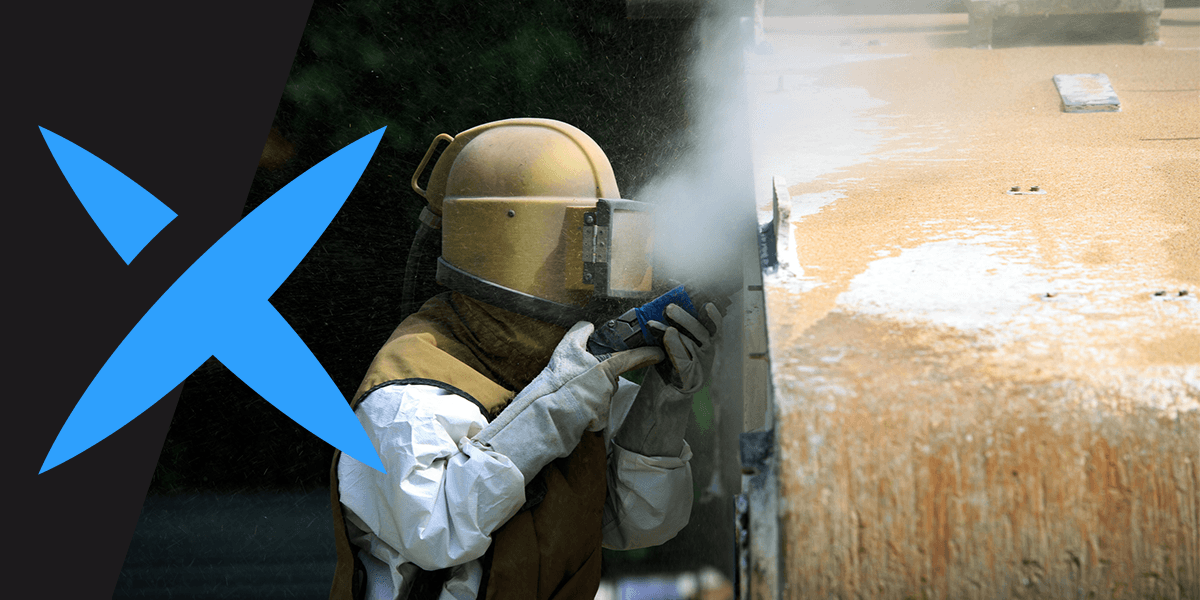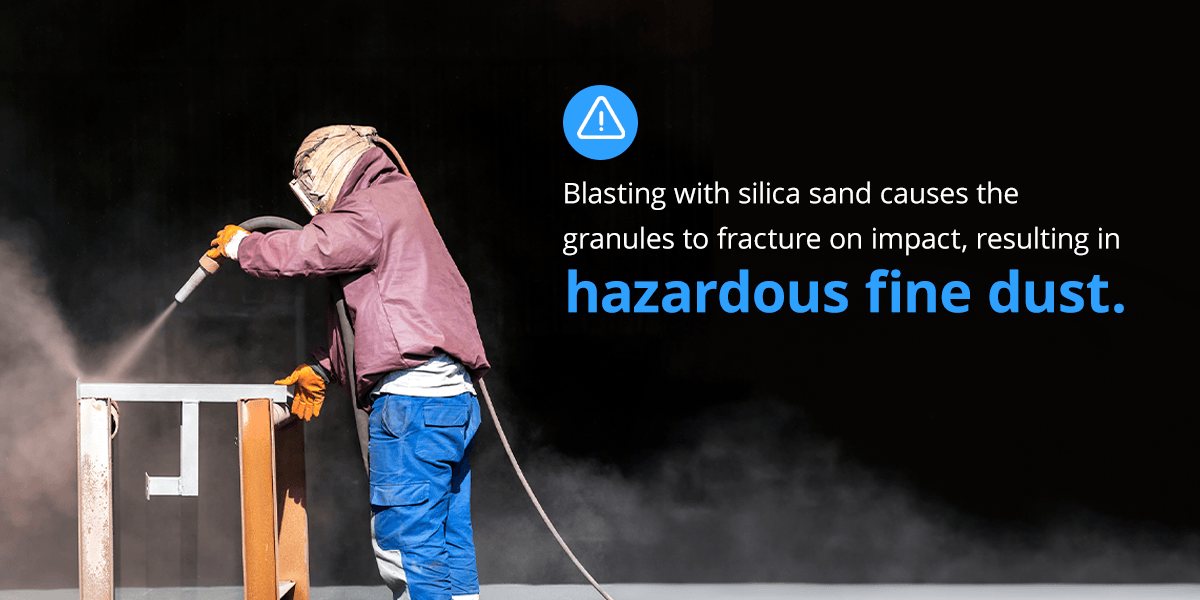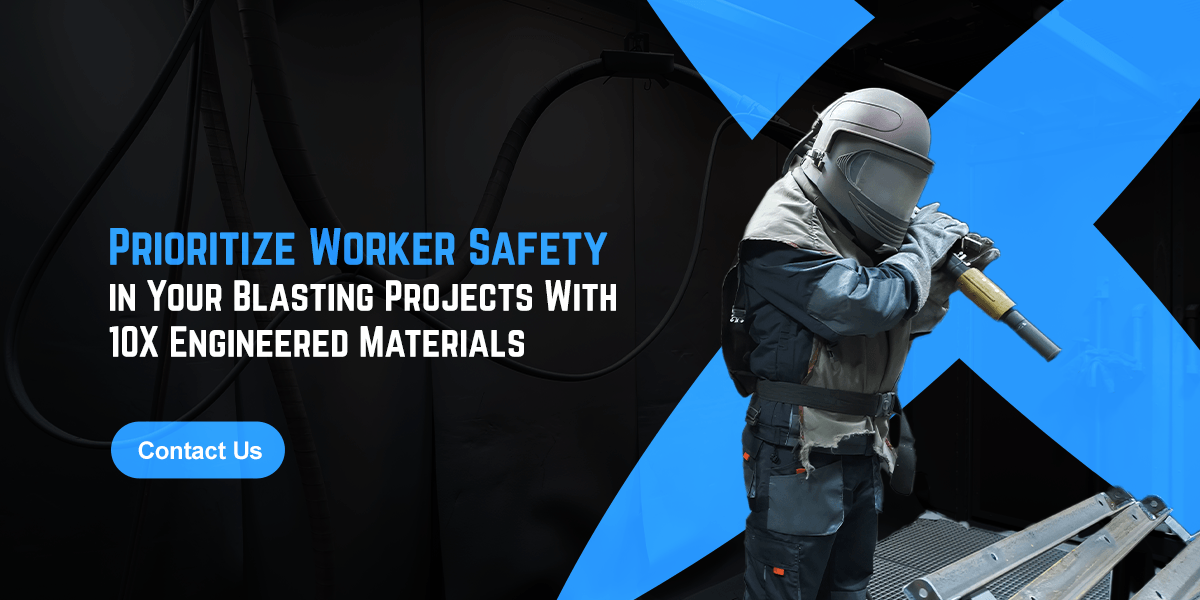Is Silica Sand Safe to Blast With?

Workers started blasting with silica sand more than 100 years ago. It was a popular abrasive media for many applications due to its availability, particle size and effectiveness on various substrates.
However, research has revealed that silica sand is dangerous to human health when inhaled, contributing to a variety of medical conditions and diseases, including the potential for lung cancer. Learn more about the hazards of silica sandblasting and discover safer alternatives for your next blasting project.
What Is Silica Sand?
Silica sand is a natural substance with a high silicon dioxide content. Silica deposits are available around the world, making it widely accessible through various mining techniques. There are three regulated forms of crystalline silica: quartz, cristobalite, and tridymite.
Various industries rely on this material for the following applications:
- Glassmaking: Glass products contain up to 70% high-quality silica sand. The substance enhances the glass’s durability.
- Casting metal: Metalsmiths require silica sand to create molds for their casting processes.
- Construction projects: Silica sand is a common construction material, used for tasks from part of constructing a building’s foundation to abrasive blasting.
- Recreational uses: Silica sand helps to fill sandboxes and create sporting surfaces such as volleyball courts and golf courses.
Why Silica Sand Is an Unsafe Blasting Media
Silica sand is relatively safe in its pure form — the problem occurs when it breaks down and becomes respirable. Blasting with silica sand causes the granules to fracture on impact, resulting in respirable dust that is hazardous. Here’s how respirable crystalline silica dust affects workers, represented in the three “Ds” of toxicity:
- Dose: This refers to the amount of exposure workers face over time. Medical experts determine the total dose per person over time with a time-weighted average. Researchers have found that there is likely no safe dose of exposure to respirable crystalline silica dust and that repeated exposures over several years lead to serious health problems.
- Dimension: Only particles less than 10 microns reach the deep gas exchange regions of our lungs. As such, the respirable fraction of crystalline silica is incredibly fine. These tiny particles are primarily removed by macrophage cells that engulf the dust particles and transport them out of our bodies through various pathways.
- Duration: The length of time dust stays within the lungs is a further cause for concern. Crystalline silica dust is not biosoluble, and, instead, is bio-persistent. Those harmful particles remain in the deep lung tissue for a long time. This is what leads to chronic and potentially lethal health effects, like lung cancer, when crystalline silica dust particles damage these protective cells within the lungs.
Fortunately, there are several alternative media options available for blasting applications. Some natural alternatives include walnut shells, dry ice, and corn cob blasting media. While these options are safer and genreally biodegradable, they are not suitable for any blasting applications that require a profile.
A better option that offers the best safety a blaster can get is 10X superoxalloy abrasives. This media is made of mineral wool insulation, which the World Health Organziation certifies as safe and concluded that the material is not classifiable as carcinogenic to humans. In addition, the superoxalloy range comes in multiple grades to meet your project needs, allowing you to prioritize worker safety without compromising on project quality, blasting speed, or the cost per square foot.
What Diseases Can You Get From Silica Sand?
Over the past few decades, medical researchers have investigated the impact of crystalline silica on human health. Some silica sand diseases include:
- Silicosis: Crystalline Silica dust damages the macrophage cells in the lungs, often leading to a disease called silicosis.
- Lung cancer: The National Cancer Institute connects increased silica exposure with elevated lung cancer cases. Studies reveal that quarry and granite workers are at a higher risk of cancer from silica sand.
- Chronic bronchitis: People develop bronchitis when their bronchial tubes become inflamed. While typically a temporary condition, people exposed to high levels of silica can suffer from bronchitis permanently.
- Autoimmune diseases: Research suggests that silica exposure affects the health of connective tissues. Poor connective tissues can result in various autoimmune diseases, such as lupus, rheumatoid arthritis, and scleroderma.
- Kidney disease: There is evidence to suggest that crystalline silica may impact kidney health. Symptoms of kidney diseases include itchy skin, changes in urine, and chronic exhaustion.
While preventive measures such as ventilation systems and personal protective equipment (PPE) may reduce worker exposure to crystalline silica dust, there is still significant risk. In addition, some employers overlook the importance of training workers on how to use PPE.
For example, workers will need to select gear in the appropriate size to ensure there are no gaps that could increase exposure. Regular inspections are also crucial for PPE adherence.

Frequently Asked Questions About Silica Sand
Blasting companies that take the time to research their media options can safeguard worker health. Here are additional considerations when contemplating the safety of silica sand for sandblasting:
Is Silica Sand Safe for Humans?
Silica sand shatters during the blasting process, resulting in fine or respirable crystalline silica dust that is proven to be unsafe for humans to inhale. As these particles are approximately 100 times smaller than a regular grain of sand, unprotected workers can easily breathe them in without even noticing.
As silica sand is bio-persistent, it remains in the lungs and typically leads to respiratory tract diseases and other long term detrimental health impacts. Put simply; it is bad to inhale silica sand or any form of crystalline silica.
How Much Exposure to Crystalline Silica Is Dangerous?
Continuous exposure to crystalline silica can lead to different health complications depending on the amount of crystalline silica someone is exposed to and how long they are exposed. For example, these dosages can contribute to multiple medical issues and even death:
- Less than 1 mg/m3: Research on granite workers in the United States reveals that dosages of this amount doubled the death rate from silicosis.
- Approximately 0.2 mg/m3: Further research in pottery factories links this dosage with 20% more cases of silicosis.
- Roughly 0.2 mg/m3: Similarly, experts link these dosages with higher rates of lung cancer.
Researchers have found that there is likely no safe dose of exposure to respirable crystalline silica dust and that repeated exposures over several years lead to serious health problems. Case in point: No amount of crystalline silica inhalation exposure is known to be safe.
Is Silica Sand a Carcinogen?
Both the International Agency for Research on Cancer and the National Toxicology Program consider silica dust to be a carcinogen. Carcinogenic substances are those proven to cause cancer through human and animal testing.
Crystalline silica is specifically associated with lung cancer. People are at greater risk if they face exposure over many years or are exposed to high-concentration doses, like those in an abrasive blasting environment using silica sand.
Prioritize Worker Safety in Your Blasting Projects With 10X Engineered Materials
Silica sand was once one of the most common sandblasting materials on the earth. Over the past few decades, medical experts have highlighted the dangers associated with using this abrasive blasting media. Selecting a safer alternative helps protect worker health.
The one abrasive blasting media leading the way in terms of safety is 10X Engineered Materials’ superoxalloy abrasives. These products are certified safe by various regulatory bodies and contain less than .1% free silica. 10X abrasives are made from mineral wool by-product, which is made from melted minerals and rapidly cooled, which results in an abrasive particle that is amorphous; meaning there is no presence of crystalline structures, and it is tempered so it resists fracturing during blasting. This results in a much lower dust level, contributing to a safer, more conducive work environment.
If you’re looking for exceptionally safe and tough blasting abrasive media that delivers premium results, contact the team at 10X Engineered Materials today to get started. Browse our selection of superoxalloy abrasives and organize delivery to your job site today.

